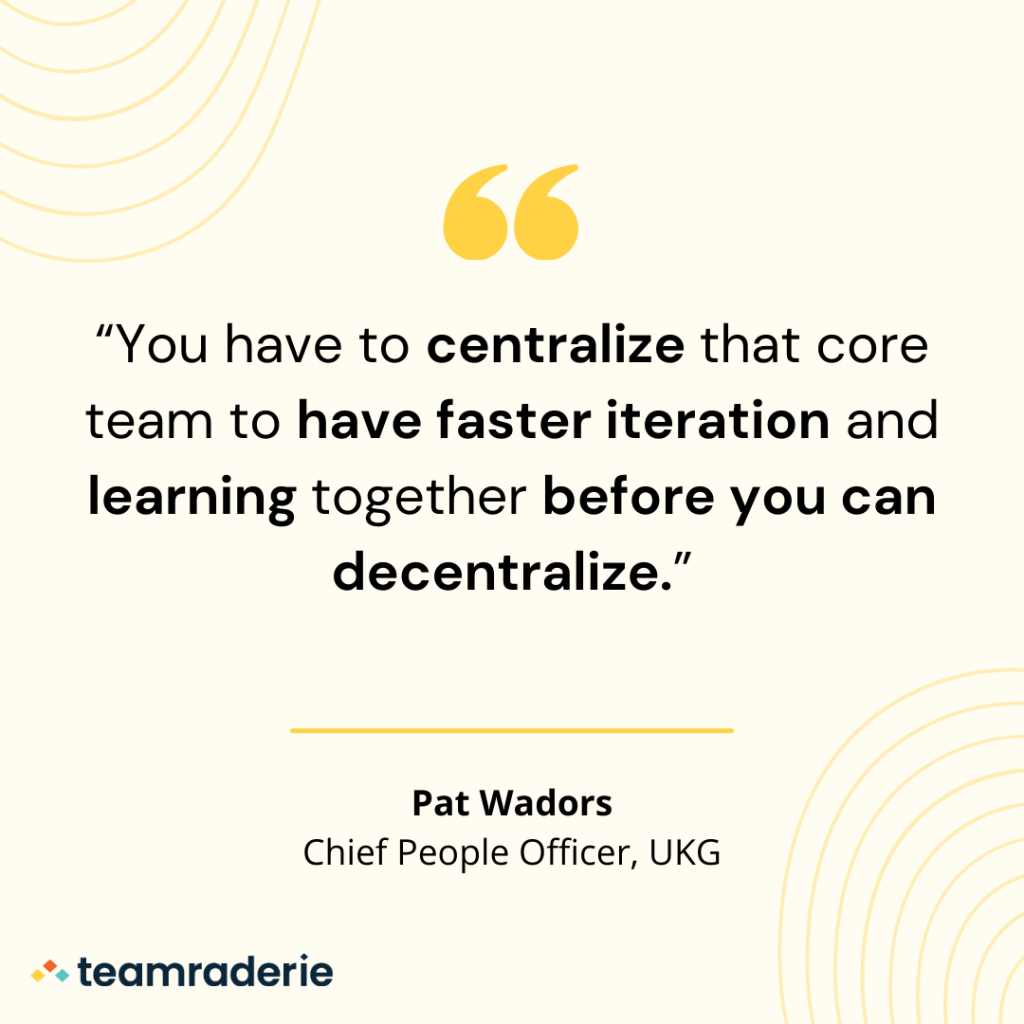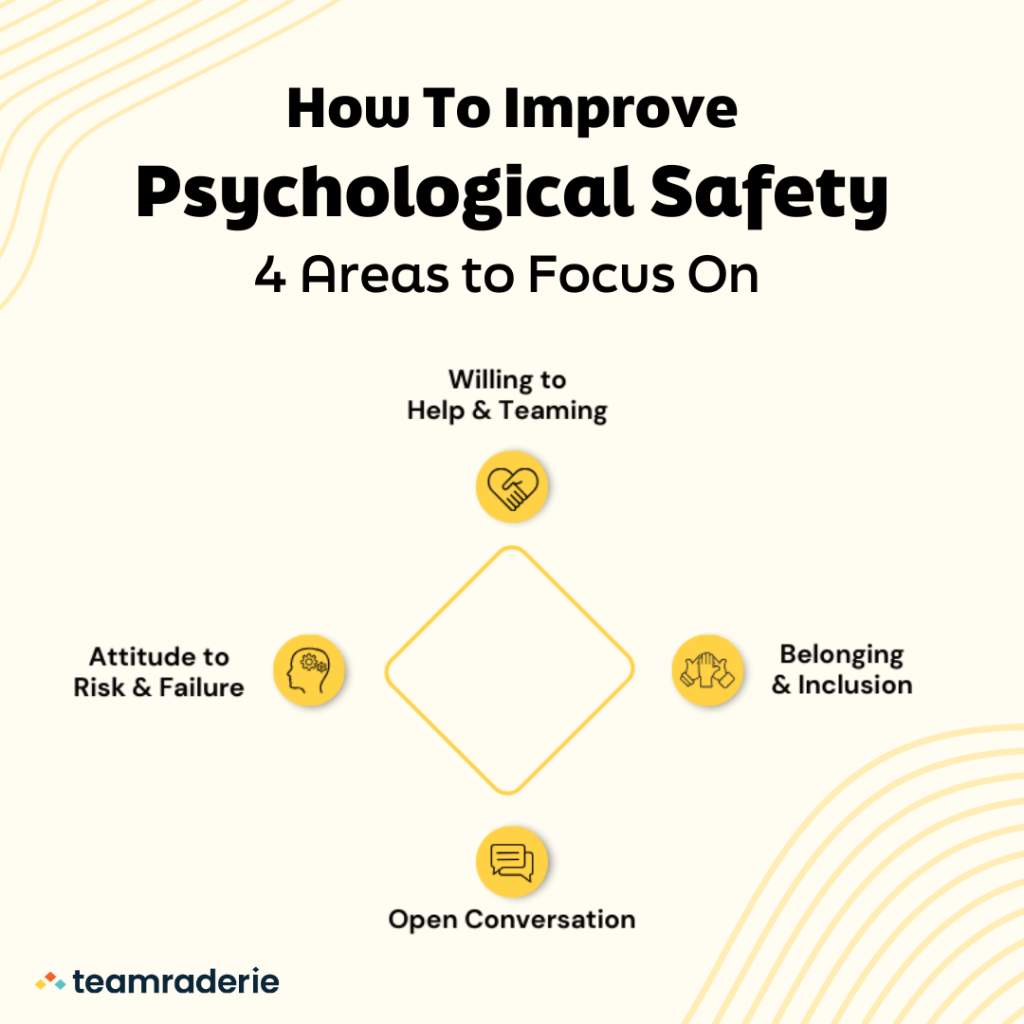Every organization wants to develop a strong leadership team.
Doing so is easier said than done, however. According to research from McKinsey, almost 90% of executives aren’t confident that their leadership training achieves the desired outcomes.
What can be done to reverse this trend, and why is leadership training so important?
Below are five tips for developing a strong leadership team.
Why Is Leadership Development Important?
Leaders in an organization have an enormous amount of influence and responsibility.
Research from Gallup shows that managers are directly responsible for approximately 70% of the variance in team engagement and performance.
Additional research from the Workforce Institute at UKG shows that managers have a bigger impact on employees’ mental health than doctors and therapists—and the same impact as spouses.
Leaders have a significant impact on their teams’ success and overall performance. For this reason, developing a strong leadership team is instrumental to organizational success.
Below are five tips for effective leadership team development.
5 Tips for Developing a Strong Leadership Team
1. Encourage Leaders to Slow Down
“Move fast and break things” is a common mantra in the workplace.
While this might work in some situations, leaders must ensure that when they’re making decisions that impact people’s lives, they’re able to take the time to make good decisions.
“If I’m gonna touch someone’s life in a meaningful way, then it’s measure twice, cut once,” says Pat Wadors, Chief People Officer at UKG. “You might get frustrated [with] that slowness, but the execution ability after that is so much more perfect.”
According to FastCompany, when leaders move too quickly, they can easily be perceived as reactive rather than responsive.
It’s a good idea to occasionally apply the brakes to ensure that you’re doing things correctly. This can help prevent costly mistakes that consume resources and time, ultimately allowing you to go faster.
As Harvard Business School Professor Amy Edmondson says, “Slow it in the beginning so it can speed in the end.”

2. Centralize Before Decentralizing
There’s some debate over whether decision-making should be centralized or decentralized. When every decision is made from the top down, it can result in frustration and employees feeling a lack of autonomy.
However, especially when scaling an organization or during periods of change, centralization can help keep things together.
“Sometimes centralization is necessary even though people think it’s a dirty word,” says Stanford Professor Bob Sutton. “I actually think that especially during crises, and when there are coordination problems and lack of agreement, then I can’t figure out how to fix it without having some centralization.”
Sutton describes excessive decentralization as “400 speedboats going in 400 different directions.”
“You have to centralize that core team to have faster iteration and learning together before you can decentralize,” agrees Wadors.

Once you’ve established an effective playbook, you can allow your individual teams and leaders to have more decision-making power.
“You’ve got to centralize to grow it, build it, learn it, and then let go and monitor the right metrics, and then you can get more efficiency out of it,” says Wadors.
3. Create a Psychologically Safe Environment
Psychological safety is the “fertile ground” in which leadership training initiatives can succeed.
A psychologically safe workplace is one in which employees can take interpersonal risks without fear of humiliation or punishment.
In a psychologically safe environment, employees feel comfortable:
- Disagreeing with a superior
- Asking questions
- Voicing concerns
- Acknowledging mistakes
- Exploring new ideas
As Amy Edmondson says, psychological safety is characterized by the absence of interpersonal fear.
According to Harvard Business Review (HBR), psychologically safe work environments increase the likelihood that leadership training will be successful—especially in areas such as problem-solving and manager communication.
If you’re unsure where to start in building a psychologically safe workplace, consider evaluating your current organization in the four areas:
- Are employees willing to help one another?
- Is there a strong sense of belonging and inclusion?
- Is there room for open conversation, and do team members participate in candorous communication?
- Is there a positive attitude towards risk-taking and intelligent failure?

Once you’ve evaluated those four components, you’ll have a better understanding of where to focus your efforts on improving psychological safety.
4. Prioritize Personal Growth
While it’s important for potential leaders to learn the tactical skills they need to succeed in their roles, research from HBR shows that the most effective leadership training is a bit more broad.
HBR suggests that leadership development initiatives should focus on “whole-person growth.” This includes traits such as:
- Resilience
- Self-awareness
- Emotional intelligence
It’s important to remember the enormous impact managers have on employee well-being and performance.
If you want to develop a strong leadership team that leads their employees to success, they must be given opportunities to grow both personally and professionally.
5. Train at All Levels
Leadership training isn’t just for potential leaders—it should be provided to employees at every level of the organization.
According to research from Gallup, leadership training should include executives, because when leadership thrives across the organization, business outcomes improve.
The business case for ensuring every leader is effective is strong, as Gallup reports the following:
- Employees who trust leadership are 4x as likely to be engaged.
- Employees whose leaders help them understand how changes will impact the company are 7.5x more likely to feel connected to the organization’s culture.
- Employees who are satisfied with their leaders’ communication are 73% less likely to feel burned out.
- 69% of employees whose leaders make them feel excited about the future are engaged, compared to 1% whose leaders don’t have the same impact.
The research from Gallup also shows that leaders—especially executives—often have widely varying ideas about the company’s purpose, which can make team alignment difficult.
Ultimately, ensuring that every leader in your organization is effective is important to employee engagement, productivity, and overall business success.
What To Look For in Leadership Training
Leadership development initiatives often fall flat, resulting in wasted time and resources.
Despite that, leadership training is nonetheless crucial to organizational success. So how can you ensure that your leadership training is actually effective?
By incorporating interactive, cohort-based learning experiences, directly tied to the flow of work, organizations can empower their leaders and achieve the desired results.
This shift in approach, moving away from passive lectures and towards active engagement, is the key to unlocking leadership potential and driving true business impact.
Teamraderie’s team experiences are live, virtual, expert-led workshops designed to help your leadership team obtain the competencies needed to thrive in their roles.
Click here to explore more about how these experiences can benefit your leadership team.

